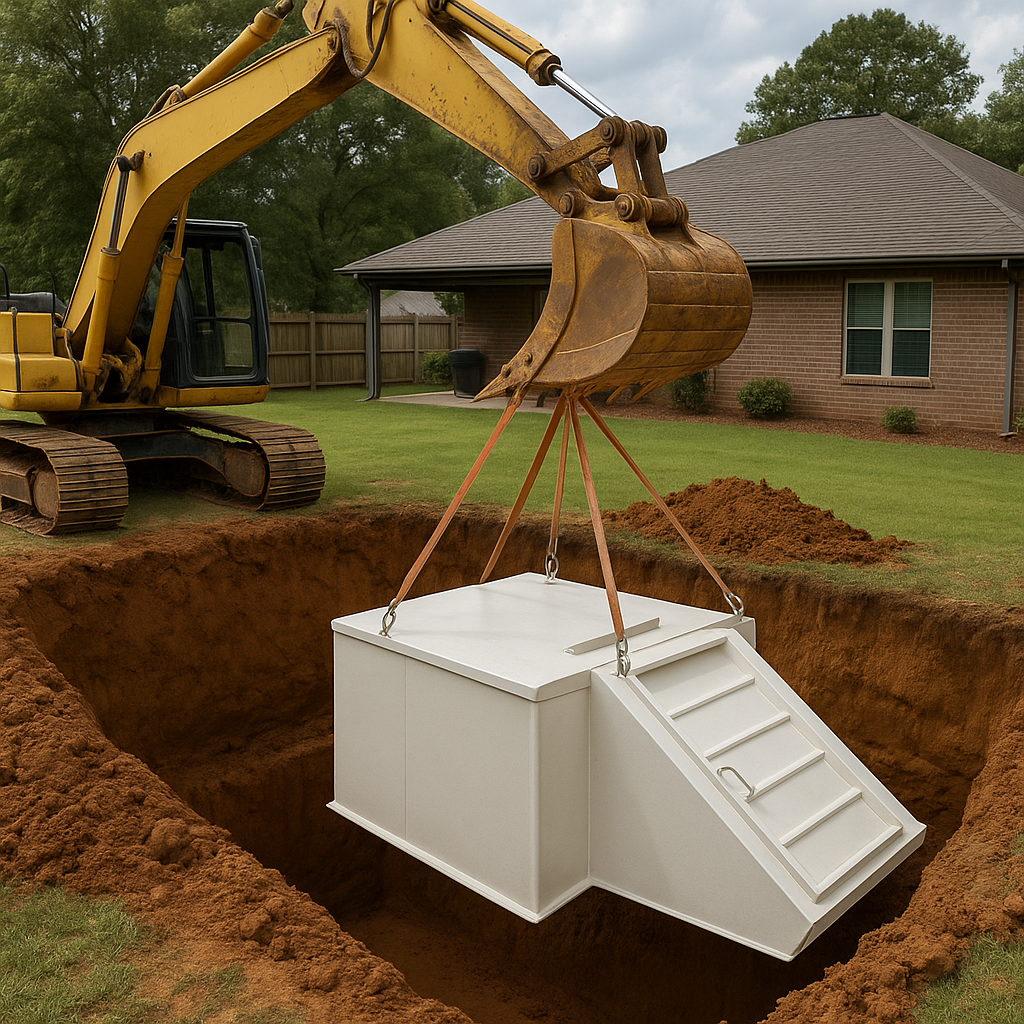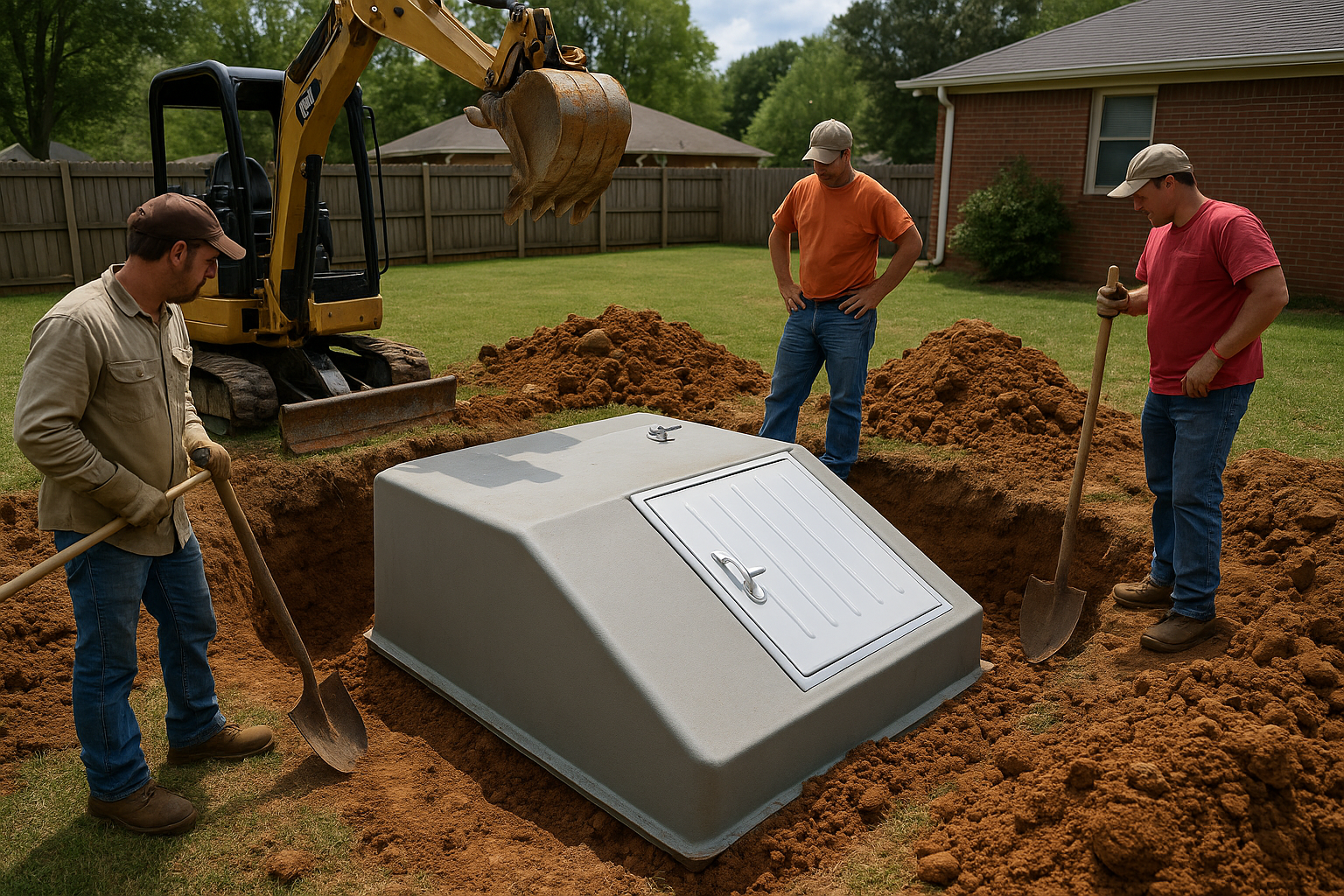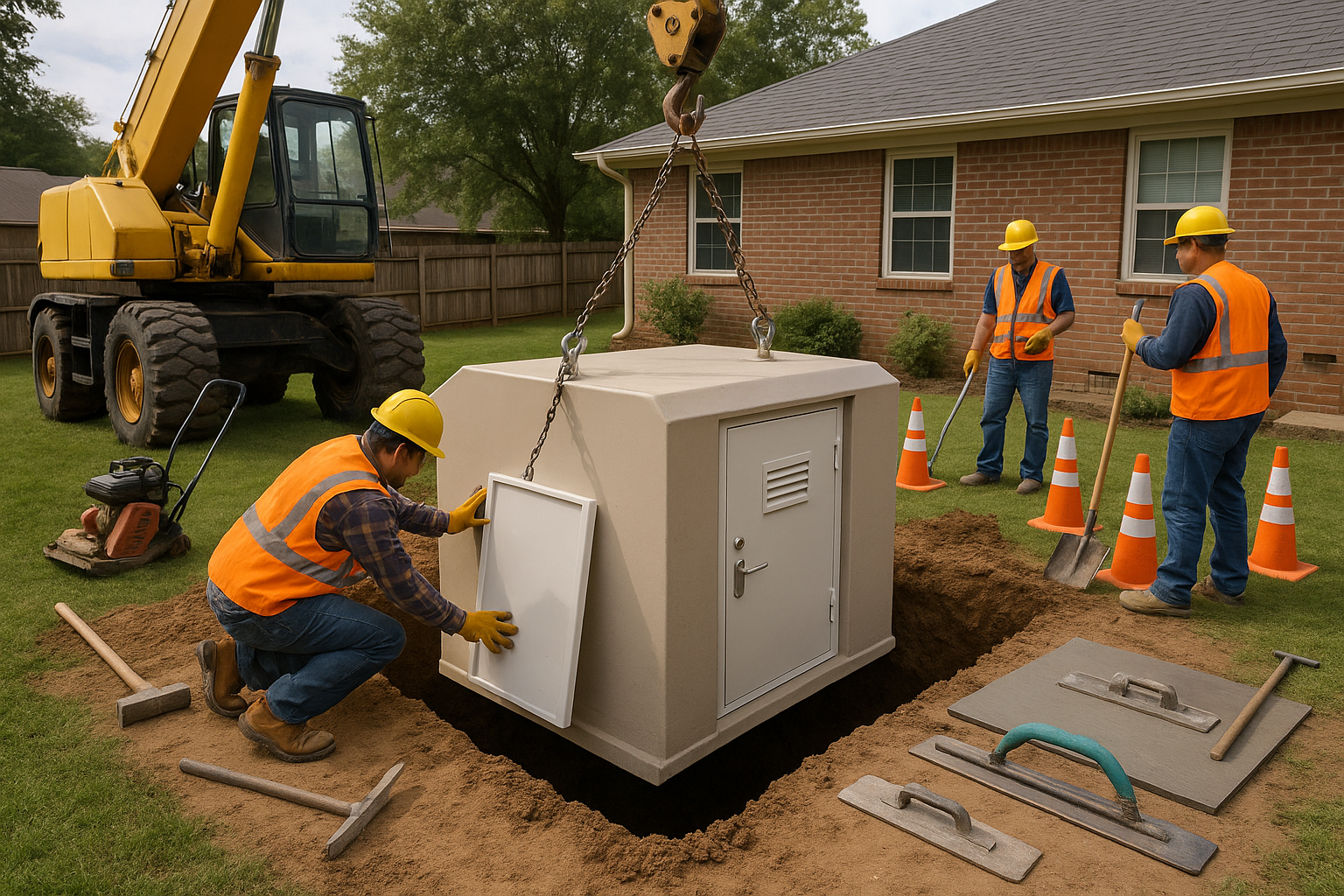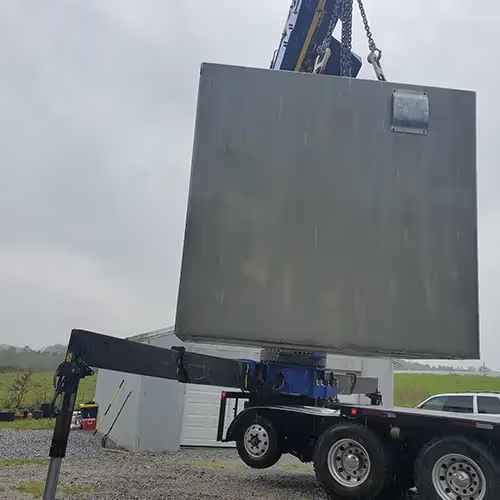Above Ground Tornado Shelter Cost Breakdown: Factors That Matter


Have you ever wondered how much an above-ground tornado shelter really costs, and what makes the price go up or down? If you’ve been thinking about adding one to your home, you’re not alone. More homeowners are exploring safer, more accessible ways to protect their families when severe weather strikes, carefully considering Above Ground Storm Shelter Prices and the Tornado Safe Room Cost. The reality is that the total investment depends on multiple factors including materials, labor, installation fees, and the size of the shelter. With more people living in tornado-prone regions, understanding these costs is crucial to making an informed decision.
Between Tornado Shelter Material Expenses, Storm Shelter Installation Fees, and other related costs, it’s easy to feel overwhelmed. Some families also consider Prefabricated Tornado Bunker Cost options, which can simplify the process while keeping costs predictable. Knowing what drives the price helps you plan smarter, compare options confidently, and design a shelter that meets your Safe Room Construction Budget. Consulting an Emergency Shelter Price Guide can give insights into average pricing and hidden costs, helping you avoid surprises.
In addition, homeowners need to consider Outdoor Tornado Shelter Costs compared to underground shelters. Understanding the Underground vs Above Ground Shelter Cost debate clarifies the benefits and trade-offs of each approach. For more guidance, check the Alabama Storm Shelter Code Checklist for regional regulations. By knowing the factors influencing price—like size, material, installation, and certification—you can confidently choose a shelter that is both safe and financially practical, giving your family peace of mind for years to come.
Understanding the Basics of Above-Ground Tornado Shelters
Before diving into costs, it’s important to understand why above-ground tornado shelters have become a trusted option. Historically, most storm shelters were underground, often built in basements or backyards. While underground bunkers provided strong protection, they presented accessibility issues, flood risks, and high construction complexity. Advances in engineering have allowed for the rise of above-ground solutions, which combine safety, convenience, and accessibility. Many homeowners now evaluate Modular Storm Shelter Pricing to find options that are quick to install, durable, and cost-effective.
An above-ground tornado shelter is a reinforced structure built to withstand EF5-level tornadoes and flying debris. It typically uses heavy-duty steel or concrete, and is anchored to a slab foundation, taking into account Storm Shelter Foundation Costs and Tornado Shelter Labor Costs. For more details on concrete construction, you can read our Concrete Storm Shelters Alabama Guide. Unlike underground bunkers, these shelters allow fast and easy entry, which is particularly valuable for families with children, seniors, or those with mobility challenges. Some designs include FEMA-approved features, ventilation systems, and customizable interiors, ensuring both comfort and safety.
Today’s market includes Prebuilt Safe Room Pricing and Storm Bunker Cost Estimate options, giving homeowners the ability to plan their Home Tornado Shelter Investment wisely. These shelters are designed to withstand extreme weather while being accessible year-round, offering long-term value that goes beyond simple protection. For tips on emergency preparation, check our Storm Shelter Supplies Alabama 72-Hour Kit. Understanding these features helps you see why above-ground shelters have become central to modern storm safety planning and why the Above Ground Tornado Shelter Cost Breakdown involves more than just material expenses.
Breaking Down the True Cost of an Above-Ground Tornado Shelter
When considering above-ground tornado shelters, one of the first questions is, “How much does it really cost?” The answer depends on multiple factors, and knowing these allows you to make informed decisions, compare options, and ensure the investment aligns with your Residential Tornado Shelter Budget. The total cost typically includes materials, labor, installation, design upgrades, certifications, and delivery charges. Being aware of these costs upfront is essential to avoid surprises during planning and construction.
Key cost components include:
- Size and Capacity – Larger shelters naturally increase Tornado Shelter Size and Cost. A 2–4 person unit is more affordable than a 10-person family-sized option.
- Material Type – Steel shelters are generally less expensive (Steel Tornado Shelter Cost) and easier to transport, while concrete shelters (Concrete Storm Shelter Pricing) provide long-term durability but involve higher labor costs.
- Design and Custom Features – Items like seating, ventilation, or emergency lighting increase Safe Room Design Cost and potential Safe Room Add-On Expenses.
- Installation Requirements – Costs vary depending on site condition. A DIY Storm Shelter Cost Breakdown can save money, while professional installation ensures proper setup, affecting the Cost of Installing Tornado Shelter.
- Certification and Compliance – FEMA or NSSA-certified shelters may include Tornado Shelter Permit Fees or Tornado Shelter Insurance Coverage, but they guarantee verified protection.
A steel above-ground shelter may cost $4,000–$7,000, while a reinforced concrete outdoor shelter could reach $12,000 depending on customizations and Tornado Shelter Upgrade Expenses. For homeowners interested in funding options, explore Alabama Storm Shelter Grants. Understanding these factors helps homeowners choose the right balance of safety, design, and cost.
Why Investing in an Above-Ground Tornado Shelter Is Worth It
Installing an above-ground tornado shelter is not only about following safety guidelines; it’s about long-term peace of mind and protecting your family. Using Above Ground Shelter Financing Options and planning with Emergency Storm Shelter Budgeting in mind can make the investment more manageable. These shelters offer reliable protection, easy access, and increased property value.
Benefits include:
- Ease of Access – No stairs, ladders, or underground entry points make shelters accessible to all family members.
- FEMA-Rated Protection – Many shelters meet FEMA and NSSA standards for EF5-level tornadoes.
- Low Maintenance – Reduced Storm Shelter Maintenance Fees compared to underground options.
- Quick Installation – Modular Safe Room Investment or prefabricated units allow fast setup.
- Added Property Value – Certified shelters increase home resale appeal.
These advantages make above-ground tornado shelters a practical and smart investment. Beyond individual safety, prepared families contribute to stronger community resilience, reducing stress and emergency service strain during storms. Proper planning and financing make this investment accessible and worthwhile. For additional protection tips, visit Above Ground Tornado Shelters for Home Protection.
Potential Drawbacks and Management
Even the best safety investments have considerations. Above-ground shelters are no exception, and understanding potential drawbacks helps in decision-making.
- Higher Initial Cost – Some models exceed Affordable Tornado Shelters options, particularly custom or concrete designs.
- Space Limitations – Property size may restrict placement; Above Ground Shelter Kits Cost may vary depending on lot size.
- Aesthetic Concerns – Some homeowners worry about visual impact, but custom designs can blend shelters with property.
- Permit and Zoning Requirements – Local regulations may require inspections or approvals. Check the Alabama Storm Shelter Code Checklist for guidance.
Managing these challenges involves hiring certified installers, planning placement carefully, budgeting early, checking local codes, and customizing shelters to suit both aesthetics and functionality. Above-ground shelters provide safety while eliminating common underground risks like flooding, rust, or limited access, making them a versatile, reliable choice for most homes.
Planning and Budgeting
Planning ensures your investment is safe, practical, and cost-effective. Steps include:
- Assess Needs – Determine occupancy to plan Tornado Shelter Size and Cost.
- Set Budget – Factor in Storm Shelter Installation Fees, delivery, and permits.
- Choose Type & Location – Decide on garage, patio, or outdoor placement.
- Get Multiple Quotes – Compare Prefab Safe Room Cost Analysis and warranties.
- Prepare Site – Clear and stabilize the ground for installation.
- Schedule Installation – Certified installers handle setup and anchoring.
- Conduct Safety Review – Test doors, emergency supplies, and accessibility.
Planning, research, and professional guidance help avoid costly mistakes and ensure a reliable shelter for years. Small, intentional steps make the process efficient and less stressful.
The Future of Tornado Shelters
Trends shaping above-ground tornado shelters include:
- Smart technology integration for alerts and security.
- Sustainable, energy-efficient materials.
- Modular and portable designs (Portable Tornado Shelter Prices) for flexibility.
- Affordable customization options as demand rises.
- Enhanced testing and certification standards to meet evolving FEMA and NSSA requirements.
These innovations improve safety, usability, and long-term value, offering homeowners more choices and greater confidence in their investment.
Making Smart Shelter Investments That Last
Understanding Above Ground Tornado Shelter Cost Breakdown ensures informed decision-making. Proper planning around Tornado Shelter Material Expenses, Storm Shelter Labor Costs, and design factors maximizes safety and value. Choosing the right combination of materials, size, and certification ensures long-term protection.
Start by assessing space, setting a realistic budget, and consulting certified providers. A well-planned investment guarantees safety, peace of mind, and a reliable shelter ready for unpredictable weather.
Building a Safer Tomorrow, One Shelter at a Time
An above-ground tornado shelter is more than a home improvement project—it’s a proactive step toward protecting loved ones. Explore materials, designs, financing, and certifications to make the best choice for your family and home. Taking these steps today ensures safety and peace of mind for years to come.




